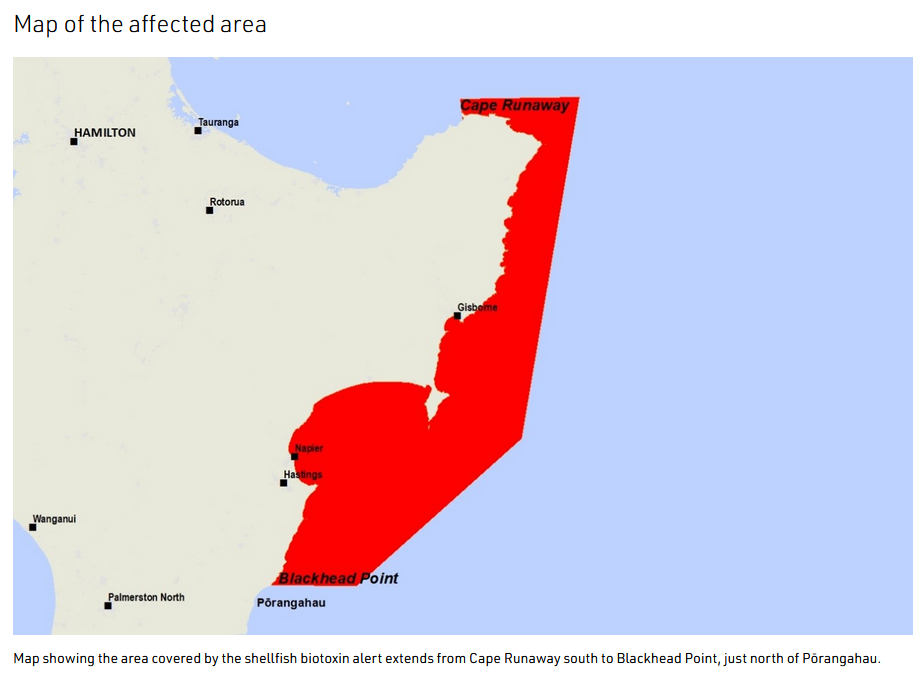Updated 21 November
Update 21 November - MPI have further extended the existing warning north to now span from Cape Runaway all the way south to Blackhead Point, which is just north of Pōrangahau.
Follow-up tests on mussels from Hicks Bay Beach showed levels of paralytic shellfish toxins 3 times the safe limit," says New Zealand Food Safety deputy director-general Vincent Arbuckle.
"Please do not gather and eat shellfish from this area because anyone doing so could get sick. Affected shellfish include bivalve shellfish such as mussels, oysters, tuatua, pipi, toheroa, cockles, and scallops, as well as pūpū (cat’s eyes), Cook’s turban and kina (sea urchin).
Current warning for East Cape issued 11 November
Do not collect or consume shellfish gathered from East Cape to Cape Kidnappers. Sharing this message on behalf of Ministry for Primary IndustriesNZ Food Safety is advising the public not to collect or consume shellfish gathered from the East Coast because of paralytic shellfish toxins.
Paralytic shellfish toxins have been detected in shellfish at Wherowhero Lagoon and Tolaga Bay at levels over the safe limit of 0.8mg/kg set by New Zealand Food Safety.
Levels of paralytic shellfish toxins are increasing and the latest results from Tolaga Bay mussels have risen dramatically and are now 11 times over the safe limit.
As algal blooms increase in size, the levels of toxins in shellfish can reach higher levels.
Please do not gather and eat shellfish from this area because anyone doing so could get sick. "Cooking the shellfish does not remove the toxin, so shellfish from this area should not be eaten."
Symptoms of paralytic shellfish poisoning usually appear within 10 minutes to 3 hours of eating and may include:
- numbness and a tingling (prickly feeling) around the mouth, face, hands, and feet
- difficulty swallowing or breathing
- dizziness and headache
- nausea and vomiting
diarrhoea - paralysis and respiratory failure and, in severe cases, death.
Pāua, crab, and crayfish may still be eaten if the gut has been completely removed prior to cooking, as toxins accumulate in the gut.
If the gut is not removed, its contents could contaminate the meat during the cooking process.
Commercially harvested shellfish – sold in shops and supermarkets or exported – is subject to strict water and flesh monitoring programmes by New Zealand Food Safety to ensure they are safe to eat.
New Zealand Food Safety has had no notifications of associated illness.
If anyone becomes ill after eating shellfish from an area where a public health warning has been issued, phone Healthline for advice on 0800 61 11 16, or seek medical attention immediately.
Ongoing testing will continue and any changes will be communicated accordingly.
For more information go to MPI’s website

